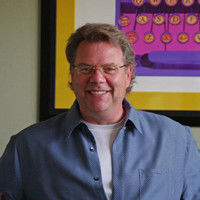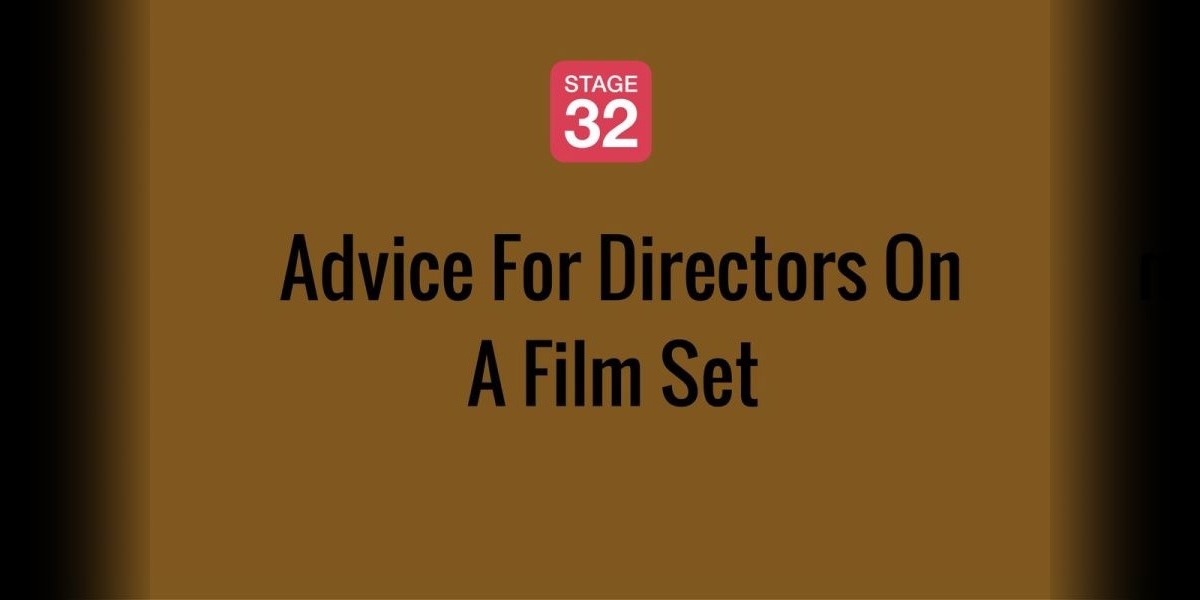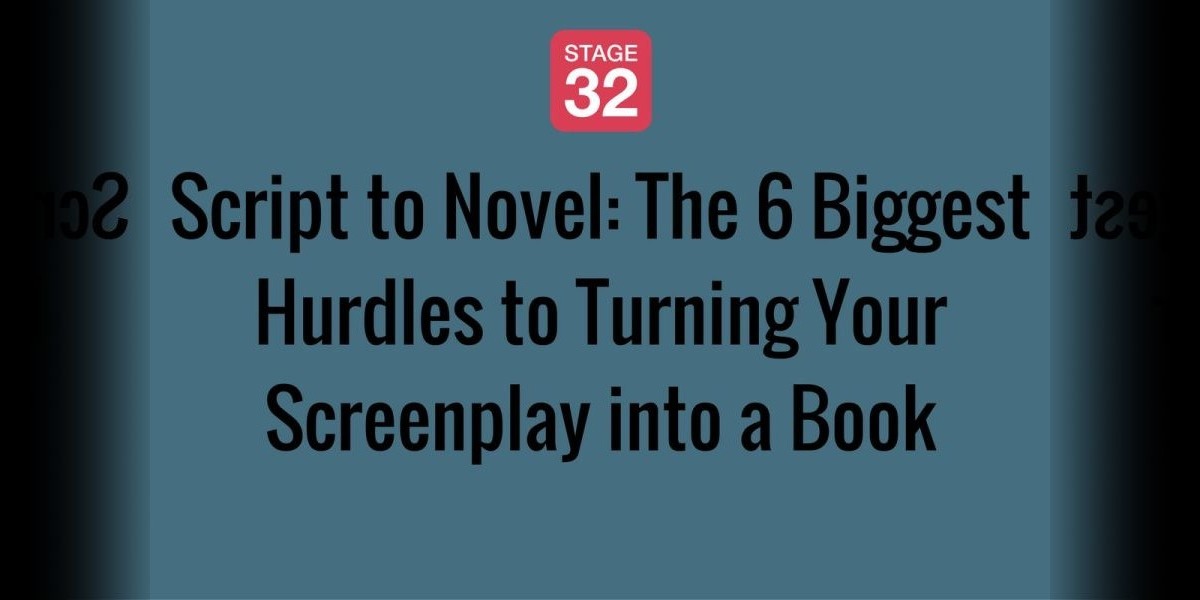Script to Novel: The 6 Biggest Hurdles to Turning Your Screenplay into a Book
Traditionally published novels have always been a lucrative source of literary properties for the entertainment industry, but, in the last decade more and more self-published books have joined the page-to-screen trend and are responsible for building some of the biggest entertainment franchises, supporting billions of dollars in global box office revenue, (for example, Amanda Brown’s Legally Blond (2001), E.L. James’s Fifty Shades of Grey (2011), Andy Weir’s The Martian (2015)).
While this fits with the familiar pattern of adapting books to film (or TV), something else is happening that was not possible prior to the self-publishing revolution: screenwriters are adapting their screenplays to novels, so that they can attract producers to option them for film/TV development. (We’re not talking novelizations; we’re talking novels—the two are not the same!)
Rather than writing the book first, then optioning to a production company and then writing the screenplay based on the book, the trend now is script first, then the book, then the option sale and then a rewrite or full-on purchase of the original script that started the process. In many ways, the old model of adaptation has been turned on its head.
With more producers and production companies scouring the self-publishing world for material, it makes sense that screenwriters should want to dust off all their old screenplays and jump into the adaptation game. Why? Because a novel with a built-in audience makes a sounder investment, than a spec script coming in over the agent transom, or through the conventional script pipeline.
What this means, is that a new sales channel has opened for screenwriters wanting to leverage their work in multiple distribution windows: film, television and print. Even if the movie/TV window falls short, the writer still has the print/e-book property to fall back on. It’s win-win for us writers.
So, just write the book—right? How hard can writing a novel be?
There are tons of 'how-to' books on the market with tips, tricks, and 'top 10 secrets' for knocking out a novel, so but if you want to go buy a book and start writing...
This same bad advice is often given to novelists who want to write screenplays, i.e., "just do it". Yes, there are many 'how-to' books on adapting novels to screenplays but, screenwriters will tell any novelist that there is a 'screenplay sensibility' that has to be developed in order to write a professional screenplay. You just can’t follow some cookie-cutter 'how-to' book.
The same is true for screenwriters trying to write their first novel. Developing a 'prose voice' and bringing the prose sensibility to your writing is daunting at best and crazy making at worst. I know, because I’ve just survived the process myself. So, here are six basic hurdles you will need to clear as you learn the process of script-to-novel adaption (and it will take time, there is a learning curve).
1: Prose sensibility vs. screenplay sensibility
'Sensibility'... is the ability to appreciate and respond to complex emotional or aesthetic influences.
Writers respond to that complexity differently depending on whether they are writing a screenplay or a novel. The mantra for screenwriters is: keep it clear; less is more; show don’t tell; get to the emotional point and move on; move fast and don’t waste time with exposition, beyond what you need to set the scene.
The biggest issue affecting sensibility, concerns what I call 'story real estate'. You have around 110 pages of story 'real estate' for a feature film and around 52 pages for an hour-long TV drama. Even in a complex series like Game of Thrones you have to distil many thousands of pages of prose down into 52-minute episodes. It is a testament to the brilliance of the producers and writers of that show that they have managed to work within the confines of their limited 'real estate' to capture the book’s audience, but, this is where the sparse and minimalist ethos of screenwriting originates... screenwriters don’t have the luxury of 'story real estate' to go long, deep, or too complex. Again, this is not to say that other films or TV shows don’t get emotionally deep, but they are the outliers, not the general rule and there is a reason for that fact: 'story real estate'.
Everything I’ve just said about screenwriters gets turned upside down and reversed for prose writers. Prose is all about language, the written word, the musicality and rhythm of the sentence, paragraph and chapter. Novelists write to be read, because people read books for the joy of reading. Readers don’t have to; they actually want to. So, language rules, but story is also critical. Unlike with screenplays, novels are the final product and so the writing process is as important as story development.
There are many novels with weak or non-existent stories that captivate readers solely on the power of the written word (In Search of Lost Time, Marcel Proust; Lectures in America, Gertrude Stein). That would never happen with a screenplay; having a weak, or worse, no story, equals an immediate 'pass' in any reading scenario. So, the mantra for novelists is: show, don’t tell, but don’t worry about telling a lot, exposition is your friend. You have no limits, so write, write, write, go deep, go long and leave no emotional stone unturned. 'Story real estate' is literally unlimited. Commercial, genre fiction has some constraints with publishers in terms of page count, but as a form, novels have no limits.
Ironically, however, having no constraints can be as crippling as having constraints that are too tight, which is more frightening.
Looking into a yawning abyss, or into a six-foot trench? This can be paralyzing, because of the combination of a focus on language, writing and having no boundaries in the writing process. Likewise, color everything in the novelist’s sensibility. Consequently, screenwriters and novelists see the world in very different ways and have very different observing devices for interpreting their story worlds. Shifting from screenwriting sensibility to prose sensibility cannot be accomplished by reading a 'how-to' book, or taking a class, or following some cookie-cutter story system. This is why this first hurdle is the hardest and most difficult to wrap your head around. It can only be shifted by having your writing critiqued by great readers and other prose writers. It’s school of hard knocks, I’m afraid. This is a new craft and new skill set that must be learned. So, invest in good teachers and don’t use screenwriters as your beta readers. You want feedback from people who are voracious book readers, not film/TV fans.
2: Point of View, Voice and Tense
This ties every writer into knots: point of view (POV), narrative voice and tense. Screenwriters don’t have to worry about this in the writing process, because screenplays are all written in the same POV/tense: i.e., third person, present tense, though dialogue might have some first person voice over. All scripts follow this model. Narrative voice is a bit like sensibility, hard to hold in your hand. Narrative voice in scripts is conveyed more through the character dialogue and less through the exposition. The 'voice' of the script can be angry, or a child’s voice, or comical, etc. The difficulty here for screenwriters is that narrative voice takes up most of their focus, as dialogue carries so much of the power of the story. Screenwriters don’t have to think about POV/tense, it’s automatic, especially if you’ve written lots of scripts, but the voice is all in the spoken word. For novelists, however, POV, tense and narrative is complicated and intricately tied to the writing.
POV/tense can be any of the following:
Omniscient (present/past)
The story is told through an observer with the author’s narrative voice. This narrator knows how the story progresses, though ideally does not reveal all at once.
First-person (present/past)
The story is told from the point of view of the 'I' narrator, who only knows what she or he sees and experiences, so all feelings, questions and internal thoughts are in the narrative voice of a unique individual.
Third-person limited (present/past)
The entire story is told through the viewpoint of one character, using the pronouns 'he' or 'she'.
Third-person unlimited (present/past)
The story is told through the viewpoints of two or more characters, with shifting points of view.
Second-person (present/past)
The story is told by the storyteller to another 'person' using the word 'you'. Rarely done in fiction today.
So, screenwriters have one POV, one tense and a limited flexibility in narrative voice through dialogue, helped out occasionally by stylistic or colorful exposition. Novelists have at least five POVs, two tenses and unlimited flexibility with voice. How does a screenwriter adapt to all this flexibility when they are trained to keep things contained in one POV, one tense and limited voice? Once again, it is all in the writing. You have to play with all of these options to see what works for the story and this takes time and effort. Even novelists struggle with POV and tense. It is not unusual for novelists to write a book once in one POV/tense and then do a rewrite of the entire book changing both POV and tense.
3: Subplots, Supporting Characters
Subplots exist in screenplays, but not like they do in novels. Screenwriters have to learn the proper use of sub-plotting and how it plays into expanding supporting characters who have their own stories within the story. Without subplots a novel’s middle will fall apart. There are many different kinds of subplots (for example, the need subplot, expositional or background, thematic, to name just a few), but most screenwriters are used to writing one or two subplots and no more. Very few screenwriters know how to weave multiple storylines together to support a mainline narrative and these are almost always films with large ensemble casts (Thirteen Conversations About One Thing (Sony Pictures Classics, 2002), Paris, Je T’aime (Celsius Entertainment, 2005), Grand Canyon (Twentieth Century Fox, 1991)).
Even in a screenplay with a small cast and only one main storyline, multiple subplots will have to be created in the translation to prose. This is one of the key areas where screenplays always have to be expanded to accommodate the novel form, because subplots support the middle of the novel and this is where most stories fall apart.
Coming up with two, three, or four sub-stories from your screenplay that only tells one major storyline can be nerve-racking and intimidating, but this hurdle must be traversed if your screenplay is going to support a three or four-hundred page narrative, but, don’t despair, subplots will always suggest themselves in the screenplay; so, look to key supporting characters and let your imagination run by giving them their own stories within the story. Just know you will crack your shins on this hurdle.
4: Narrative Scope
Narrative scope refers to the complexity of the story form. In prose fiction, novelists have many 'containers' to choose from: short story, novelette, novella, novel and the series: Screenwriters also have various 'containers' to choose from: feature film, series, hour-long drama, half-hour sitcom and the short.
Each screenplay format has its own peculiarities and requirements and screenwriters are well aware of the constraints and demands for each. It is the same for novelists, but, screenwriters have to learn the prose forms in order to understand their oddities and demands before any adaptation is attempted. For example, novels, as we’ve discussed, can have hundreds of characters, multiple subplots and a main line story. Novellas have limited characters and few if any subplots. Short stories are even more constrained and focus (usually) on discrete periods of time, with only one POV (there are exceptions, but few). Each prose format also has word count considerations (similar to screenplay page count restrictions) that must be understood: short story (7,500 or less), novelette (7,500–17,000), novella (17,000–30,000), novel (30,000 and above).
A screenwriter has to learn how to gauge which prose 'container' is best suited to his/her screenplay and story. Jumping into pages before you have a good sense for this hurdle can lead to many fits and starts in the writing process.
Reworking the Premise
Adapting a novel to screenplay format always means deleting material and reducing the story to fit the constraints of film or TV. This often means reworking the original story so that it can fit the page limits of the script format under consideration (feature, hour-long drama, etc.).
The same is true moving from script to novel. The screenplay’s premise will almost always have to be reinvented to build in the main subplots, new action lines and more complex story elements. The knee jerk is to use the script as a great outline for the book, for example, follow the script’s story beats and all will be well. This almost never works. If you do not go into the adaptation process with a mindset that you will have to retool your story from the ground up, then you may be setting yourself up for major struggles down the development road. Turning a script into a novel is not just about adding words and expanding scenes, it’s about adding the right words and expanding the right scenes.
6: Exposition, Showing and Telling vs. Show, Don’t Tell
Screenplays are about showing everything on the sleeve. There is some telling (in the form of montages), but 'show, don’t tell' is the best practice. Not so with novels. Novels allow for far more telling than showing. This is hard for screenwriters because the script development process rejects long exposition and anything that is not visual on the page. Learning how to use exposition requires a whole, new mindset on the part of the writer that says, 'exposition is your friend'. For most novelists trying to write screenplays, one of the telltale signs that the writer is a novelist is that their exposition tends to be many paragraphs long—kiss of death for any screenplay.
In contrast, for many screenwriters trying to write prose, the opposite is true; exposition tends to be short, curt, stunted and in sentence fragments. Once again, for the screenwriter attempting to make this mind shift, the solution is not some simplistic strategy of writing in complete sentences and adding more words for the sake of volume. The key to success is learning how to leverage all the 'story real estate' by going deeper into the motivations of your characters, finding lyrical and even musical ways of describing the story world and luxuriating in writing that fills in the expositional holes of the story, but doing so organically, using just the right amount of words: no more, no less. The two main potholes waiting for you here are: rambling, overly detailed descriptions and purple prose (extravagant or ornate prose that breaks the narrative flow and screams, "Isn’t my writing clever?"). You will do both, so get over that anxiety. Finding the balance between economy of words, meaningful content and proper pacing will only be found by doing, but knowing these potholes are waiting is critical as you move forward.
These are six important hurdles that must be jumped over in order to make your script a successful novel. In my opinion, no 'how-to' book, no story guru and no master class can really prepare you for the jumping. However, if you can at least know what is waiting for you in the high grass, you can avoid surprises and prepare yourself so that your transition from script to novel becomes an encounter and not a confrontation. After all, writing is hard enough as it is.

About Jeff:
Jeff Lyons is a published author, screenwriter, editor, and story development consultant with more than 25 years' experience in the film, television, and publishing industries. He has worked with literally thousands of novelists, nonfiction authors, and screenwriters helping them build and tell better stories.
Jeff is an instructor through Stanford University's Online Writer’s Studio, University of California at Riverside's Extension Program, and is a regular guest lecturer through the UCLA Extension Writers Program. He is a regular presenter at leading writing and entertainment industry trade conferences, as well as a contributor and advisor to leading entertainment industry screenwriting and producing fellowship programs, such as the Producers Guild of American's "Power of Diversity Producing Workshop," and the Film Independent Screenwriting Lab. Jeff is also a regular guest blogger on major writing industry blog sites like Script Magazine and Stage32.com. Over the years, he has been a trusted story development consultant to many indie producers, produced screenwriters, production companies, and VR and new media content developers.
Jeff has written on the craft of storytelling for Writer’s Digest Magazine, Script Magazine, The Writer Magazine, and Writing Magazine (UK). His book, Anatomy of a Premise Line: How to Master Premise and Story Development for Writing Success, is the only book available devoted solely to the topic of story and premise development for novelists, screenwriters, and creative nonfiction authors. His other book, Rapid Story Development: How to Use the Enneagram-Story Connection to Become a Master Storyteller, will be published by Focal Press in late 2017.
In addition to his nonfiction work, Jeff is co-authoring (with Stephen David Brooks) the Jack Be Dead Series, the first volume of which was published on Amazon in March 2016, Jack Be Dead: Revelation. This, and his other genre fiction work, is published through Storygeeks Press.
Jeff's author site can be found at: www.jefflyonsbooks.com
Jack Be Dead can be found at: http://www.jackbedead.com/.
Like this blog post? Please share it on social media (Facebook, Twitter, LinkedIn, email etc) by using social media buttons at the top of the blog. Or post to your personal blog and anywhere else you feel appropriate. Thank you.
As always, we welcome thoughts and remarks on ANY of the content above in the Comments section below...
| Advice For Directors On A Film Set |
| 32 Ways to Grow Your Following on Social Media for Actors And Filmmakers |
Search Stage 32 Blog
There are now 4037 blog posts for you to enjoy. Search them all by tags below.
Acting, Advice, Cinematography, Coffee & Content, Composing, Contests, Distribution, Featured, Filmmaking, Financing, Inspirational, Networking, Producing, Screenwriting, Success Stories, Tips, Trending,Relevant Tags
Recommended Articles
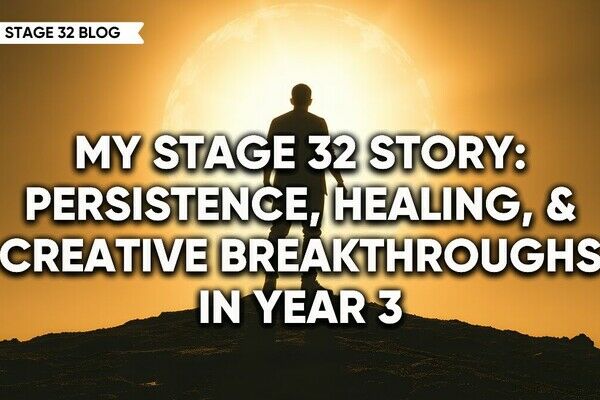
My Stage 32 Story: Persistence, Healing, & Creative Breakthroughs in Year 3

Insider Intel: The Studio War & The Rise of Indies

Find Your Footing on Stage 32: Join Our December Community Open House
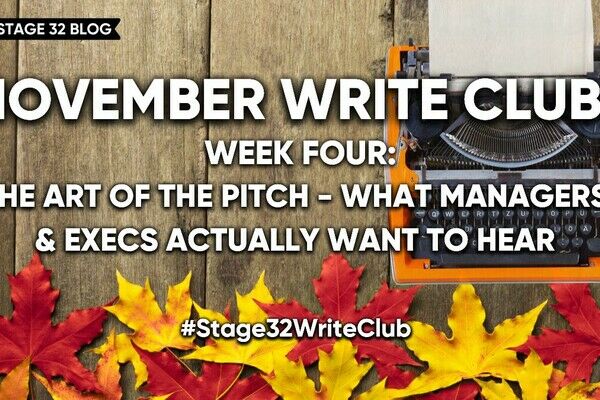
November Write Club Week 4: The Art of the Pitch- What Managers & Execs Actually Want to Hear

Insider Intel: 2026 Predictions

4 Reasons To Have Audio Description On Your Film

Don't Let the Momentum of November Write Club Die: How to Stay Active Into 2026 & Beyond!

Insider Intel: A-listers Are Dead. Long Live A-listers.

Wearing Many Hats As A Creative


